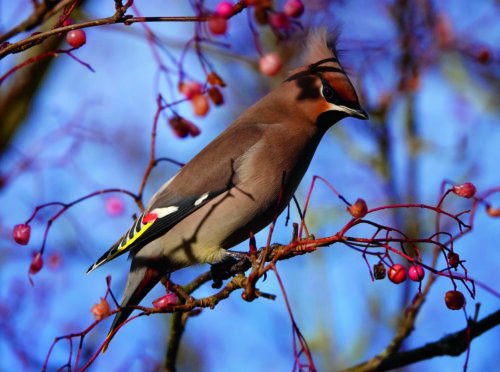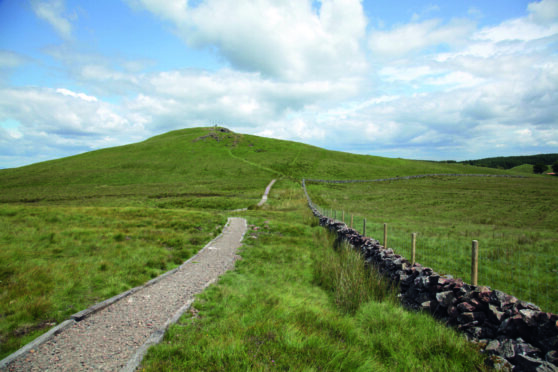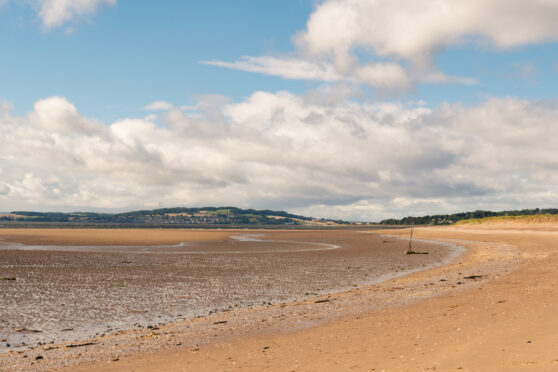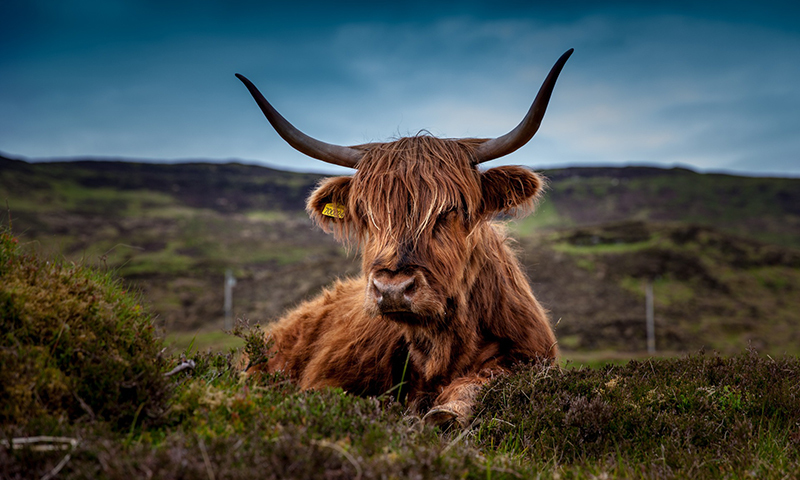
Living in Highland Perthshire means that finding a bank is akin to searching for the Holy Grail. Trying to synchronise timings with the opening hours of these few remaining establishments is even more of a challenge.
But back in the dim but not so distant past, when most towns had these valuable monetary resources, I found myself skulking in the dark in our local bank’s car park, guiltily stealing cotoneaster berries. I had noted the fulsome shrub while shopping earlier that day. All the berries in our garden had long since been devoured by large flocks of fieldfares and redwings, and I was in dire need of some to tempt an unusual casualty.
That was the only time I have ever had a bohemian waxwing brought to me. The bird was stunned, having flown into a window. It was also painfully thin.
The phone had rung, and a concerned voice said: “I found a parakeet lying on the patio – it must have escaped. It doesn’t look very well, would you take it?”
Soon after, the bird arrived. Intrigued to see if it was indeed a parakeet, I opened the box and, to my delight, found a waxwing. You’d be forgiven for thinking these enchanting starling-sized and similarly shaped birds with their exotic plumage, flamboyant crests and exuberant chatter were members of the parrot family.
My waxwing was a charming, easy patient. During recuperation, it consumed an astonishing amount of berries, and I had to return for further bank robberies. After just a few days, I set it free.
The winter arrival of waxwings to Britain is never guaranteed. Some years there might be reports from all around the country. Flocks can be large or small, and are often predominantly seen down the eastern side of the country – but might also be in the islands, from Shetland to the Outer Hebrides.
Winter visits might be sporadic or non-existent – appearances are solely dependent on that year’s breeding success in Northern Scandinavia and can relate to the failure of berry crops. In tough years, fruits and berries are quickly exhausted and the deficit forces large numbers of birds south in search of vital sustenance. These appearances are known as “irruptions”.
One of the most notable aspects of waxwings is that you are equally likely to see them in the urban environment as in the countryside. The planting of ornamental shrubs, including berry-bearing trees, often attracts them to retail parks, supermarket car parks and school playgrounds.
Rowan, hawthorn, sea buckthorn and cotoneaster are all devoured, and the trees quickly stripped. They also eat apples, crab apples and rosehips with exuberant speed. So many berries go down in such a short time that the ground is splattered with equally colourful droppings. Most of these itinerant flocks consist of young birds and the moment they have ransacked a tree, they depart hurriedly in search of more.
In 1771, the Welsh naturalist Thomas Pennant referred to a large flock of waxwings he spotted in Edinburgh as “chatterers”. It is usually this distinctive sound that alerts me to their presence.
Bird names can be misleading, and the word “bohemian” does not relate to the area where the waxwing lives, but rather to its nomadic tendencies.
However, the brilliant red markings on their wing feathers perfectly resemble blobs of wax, so that part of their name is very apt. Waxwings are birds of the north where they breed in dense, boreal forests.
Like waxwings, bramblings only appear in winter, where they might be seen among flocks of their close relative, the chaffinch.
In Scandinavia, in autumn, vast flocks of bramblings favour beech woodland where they will feast on beech mast. And 20 years ago, winter walks by the River Tay were often punctuated with copious sightings of colourful tortoiseshell bramblings in among flocks of mixed finches.
Bramblings stand out from the crowd, being far more vibrant – their colours brighter and more potent than those of the chaffinch.
Sadly, though I might occasionally still see a few, numbers have dwindled due to changes in farming policy and cropping rotations, as well as the advent of the vast machinery that leaves fields devoid of gleanings after harvest.
This bird’s name is also misleading and the word brambling does not relate to the bird’s love of brambles. It is a derivation of the word “brandling” – once used to describe a young salmon that, like the brambling, has rich brindled colouration.
Author Thomas Bewick nicknamed the brambling “mountain finch” and in some parts of Scotland, it was referred to as “tartan back”. A few pairs of bramblings have bred in this country, though it’s incredibly unusual.
Immense flocks of bramblings also occasionally land on oil rigs, particularly during severe storms.
If you are lucky, you might see this lovely member of the finch family on your bird table, where it will enjoy the commercial bird food put out.
We have the intrepid ornithological duo of Desmond and Maimie Nethersole-Thompson to thank for much of our knowledge of another seasonal visitor – the snow bunting. He described it as “possibly the most romantic and elusive bird in the British Isles and certainly the hardiest small bird in the world”.
The Nethersole-Thompson’s extraordinary, dedicated field studies of the shy and secretive greenshank, dotterel, common crossbill and snow bunting led to the publication of essential monographs of each bird.
Snow buntings are the most northerly breeding of any land bird. They could be viewed as the Arctic equivalent of the house sparrow as they live in close proximity to Inuit families, similarly to how sparrows once co-existed beside us.
Hillwalkers are familiar with the beautiful snow bunting as it might appear on wind-scoured snowy mountain summits, defying the odds to eke out an existence feeding on invertebrates trapped in the snow.
It is nicknamed “sna’ fuhl”, which does not relate to foolish behaviour but rather to the word “fowl”. Flocks of lovely, round snow buntings with their dappled plumage flit along the winter tideline, too, and feed on invertebrates on rotting seaweed or the seeds of windblown marram grass in the dunes.
Small numbers of snow buntings breed on the Cairngorm plateau, where their nests are notoriously hard to find, secreted in crevices in inaccessible rocky ravines. Nevertheless, snow buntings, like other exciting winter wanderers, can turn up in surprising places.
My late friend, the brilliant bird artist Donald Watson, told me that when he was a boy, a flock of snow buntings landed on the pitch at Murrayfield during a rugby game – well-suited to their other nickname, “snowflake”.
Perhaps it is the uncertainty of when, and if, you might see these unusual birds that adds to their mystery and undisputed charm.
Polly’s People – pollypullar.com

Enjoy the convenience of having The Sunday Post delivered as a digital ePaper straight to your smartphone, tablet or computer.
Subscribe for only £5.49 a month and enjoy all the benefits of the printed paper as a digital replica.
Subscribe





